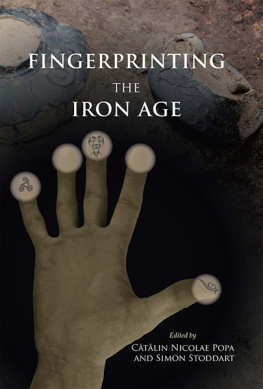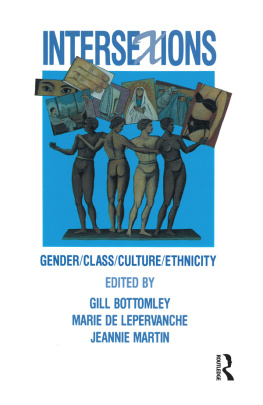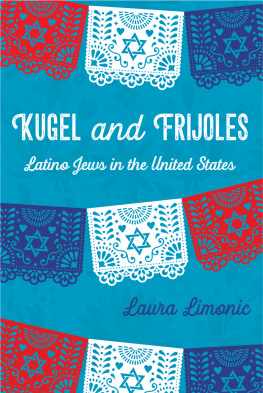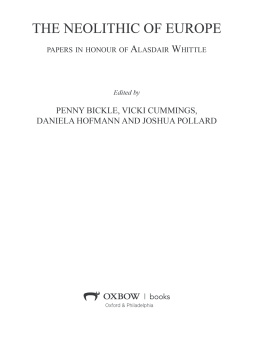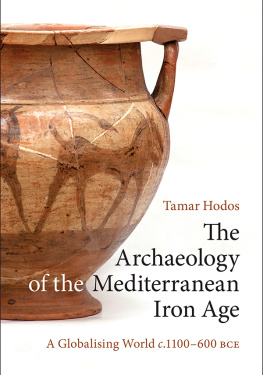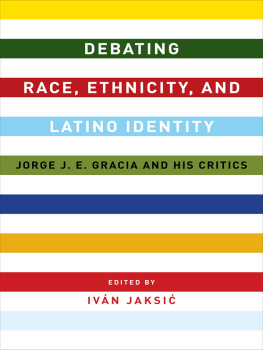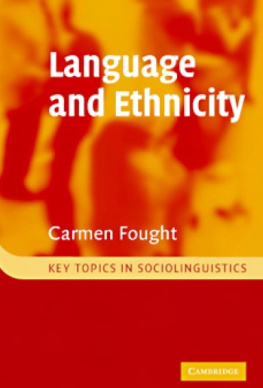Published in the United Kingdom in 2014 by
OXBOW BOOKS
10 Hythe Bridge Street, Oxford OX1 2EW
and in the United States by
OXBOW BOOKS
908 Darny Road, Havertown, PA 19083
Oxbow Books and the individual authors 2014
Hardback ISBN: 978-1-78297-675-2
Digital ISBN: 978-1-78297-676-9
A CIP record for this book is available from the British Library
Library of Congress Cataloging-in-Publication Data
Fingerprinting the Iron Age : approaches to identity in the European Iron Age : integrating
South-Eastern Europe into the debate / Catalin Nicolae Popa and Simon Stoddart.
1 online resource.
Includes bibliographical references and index.
Description based on print version record and CIP data provided by publisher; resource not
viewed.
ISBN 978-1-78297-676-9 (epub) -- ISBN 978-1-78297-677-6 (mobi (kindle)) -- ISBN 978-1
78297-678-3 ( pdf ) -- ISBN 978-1-78297-675-2 1. Iron age--Europe. 2. Social archaeology--Europe.
3. Group identity--Europe--History. 4. Social structure--Europe--History. 5. Europe--Antiquities.
I. Popa, Catalin Nicolae, editor, author. II. Stoddart, Simon, editor, author.
GN780.2.A1
936--dc23
2014044700
All rights reserved. No part of this book may be reproduced or transmitted in any form or by any
means, electronic or mechanical including photocopying, recording or by any information storage
and retrieval system, without permission from the publisher in writing.
Typeset by M.C. Bishop at The Armatura Press
Printed in England by Short Run Press, Exeter
For a complete list of Oxbow titles, please contact:
| UNITED KINGDOM | UNITED STATES OF AMERICA |
| Oxbow Books | Oxbow Books |
| Telephone (01865) 241249, Fax (01865) 794449 | Telephone (800) 7919354, Fax (610) 8539146 |
| Email: | Email: |
| www.oxbowbooks.com | www.casemateacademic.com/oxbow |
Oxbow Books is part of the Casemate Group
Front Cover: Designed by Barbara Hausmair and Catalin Popa
The publication of this book was supported by

Contents
Simon Stoddart
Simon Stoddart and Ctlin Nicolae Popa
Sndor Berecki
Matija renar and Dimitrij Mleku
Bela Dimova
Mariana Egri
Gelu Florea
Alexandra Ghenghea
Marko A. Jankovi
Vladimir D. Mihajlovi
Ctlin Nicolae Popa
Hrvoje Potrebica and Marko Dizdar
Aurel Rustoiu
Nikola Theodossiev
Ivan Vrani
Manuel Fernndez-Gtz
Oliver Nakoinz
Peter C. Ramsl
Louisa Campbell
Elizabeth Foulds
Yvonne Inall
Olivia Kelley
Simon Stoddart
Staa Babi
John Collis
Peter Wells
Ctlin Nicolae Popa and Simon Stoddart
Preface
This volume had its origins in the conference held at Magdalene College, Cambridge on 2325 September 2011. Nevertheless, attention has been paid towards bringing the volume together as a whole, striving towards a unified purpose out of the multiple foundations of identity, including the production of a unified bibliography and index.
The frontispiece by Lottie Stoddart has been inspired by the menus of de Mortillet dinners held in France in the late nineteenth and early twentieth century. The elements of composition are entanglements of the illustrations from the volume. The unified bibliography follows an anglicised scheme of both capitalisation and alpha-betisation on stylistic grounds, even if this may appear to run counter to individual linguistic identities which might have organised matters differently. The index was constructed by Catalin Popa and Simon Stoddart, aided by some individual authors. Authors have only been indexed when their names appear in the main text, although we have mainly excluded the editors reference to contributors in the introduction and conclusion.
Contributors
(IN ALPHABETICAL ORDER)
Staa Babi (BA, MA, PhD, University of Belgrade) is an Associate Professor of Classical Archaeology, Department of Archaeology, Faculty of Philosophy, Belgrade. Her major publications include Poglavarstvo i polis Starije gvozdeno doba centralnog Balkana i grki svet (Chiefdom and Polis Early Iron Age of the Central Balkans and the Greek World), Belgrade: Institiute for Balkan Studies, 2004; Grci i Drugi Antika percepcija i percepcija antike (Greeks and Others Ancient Perceptions and Perceptions of Antiquity), Belgrade: Klio, 2008; (co-authors M. Diaz-Andreu, S. J. Lucy and D. Edwards) The Archaeology of Identity. Approaches to gender, age, status, ethnicity and religion, London: Routledge, 2005.
Sndor Berecki is an archaeologist at the Mure County Museum in Trgu Mure, Romania. He studied Archaeology in Cluj Napoca and Alba Iulia, completing his doctorate on Transylvanian La Tne finds in 2009. He has written on various features chronology, rites and ritual, material culture of the Late Iron Age in the Carpathian Basin. He initiated the Trgu Mure Colloquia in 2008 and edits their proceedings.
Louisa Campbell graduated with a PhD in Archaeology from the University of Glasgow in 2011 and is an Honorary Research Associate in Archaeology at the university. A Roman ceramic specialist, her main research interests are threefold: material culture, the Roman and Provincial interface with a particular focus on frontier contexts and theoretical approaches to the study of culture contact. She teaches at the University of Glasgows Centre for Open studies and coordinates a programme of public engagement for the Strathern Environs Royal Forteviot project. She has recently taken up the position of Coordinator for the EAA Glasgow 2015, the 21st Annual Meeting of the European Association of Archaeologists.
John Collis is Professor emeritus of the University of Sheffield where he taught the European Iron Age and field methods. He studied Archaeology in Cambridge, completing his doctorate on Oppida in 1973; he also studied in Prague and Tbingen, and has excavated mainly in southern England and central France, but has also done fieldwork in central Spain and Italy. He has written extensively on various aspects of urbanisation in Iron Age Europe, on the Celts, coinage and excavation methods.
Matija renar is research associate at the Department of Archaeology of the University of Ljubljana and archaeologist at the Centre for Preventive Archaeology of the Institute for the Protection of Cultural Heritage of Slovenia, where he is currently involved in different research projects. He studied archaeology at the University of Ljubljana, completing his doctorate on Bronze and Early Iron Age of Eastern Slovenia in 2009. His main interests are Bronze and Iron Age Europe, landscape archaeology and protection of archaeological heritage.
Bela Dimova read Archaeology and Anthropology at Cambridge, and obtained a Masters in Archaeology of the Eastern Mediterranean and Middle East from the Institute of Archaeology in London. Her ongoing PhD project at Cambridge deals with long-term social change and cultural encounters between Thrace and Greece through the Iron Age.
Marko Dizdar is a senior research fellow at the Institute of Archaeology. He graduated from the Zagreb Faculty of Humanities and Social Sciences, and earned his PhD degree at the same Faculty, having defended a dissertation on the Late Iron Age in the territory of central Croatia. He has led excavations of the Iron Age sites in northern Croatia, especially of the Middle La Tne cemetery in Zvonimirevo. His scientific research focuses on the identity of the Late Iron Age in the territory of southern Pannonia and its contacts with northern Italy and central Europe. Another topic of his interest is the process of Romanisation of the population of southern Pannonia. He is currently the director of the Institute of Archaeology in Zagreb.
Next page
